Cravat man Nicholas B. Daddazio
http://www.croatia.org/crown/articles/10763/1/Cravat-man-Nicholas-B-Daddazio.html
By Nenad N. Bach and Darko Žubrinić
Published on 11/20/2015

Nicholas B. Daddazio, the Cravat Man in his atelier in New York.
"Thus, the task is not so much to see what no one yet has seen,
but to think what nobody yet has thought about that which everybody sees."
- Arthur Schopenhauer



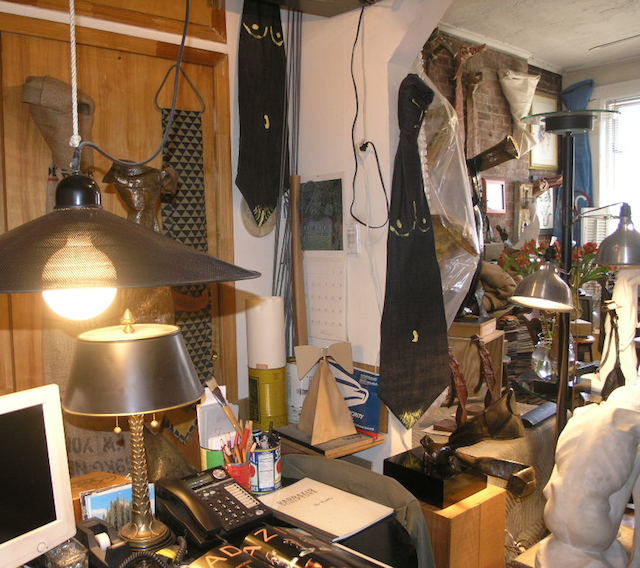
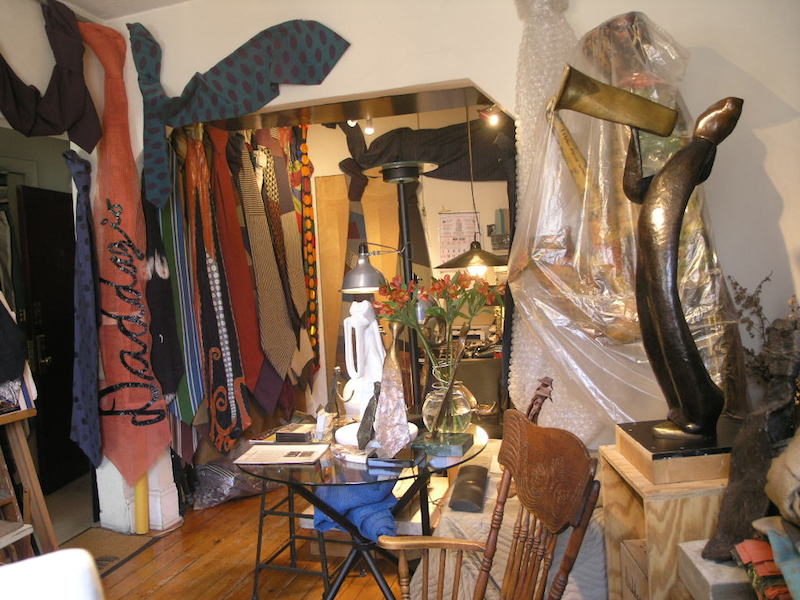
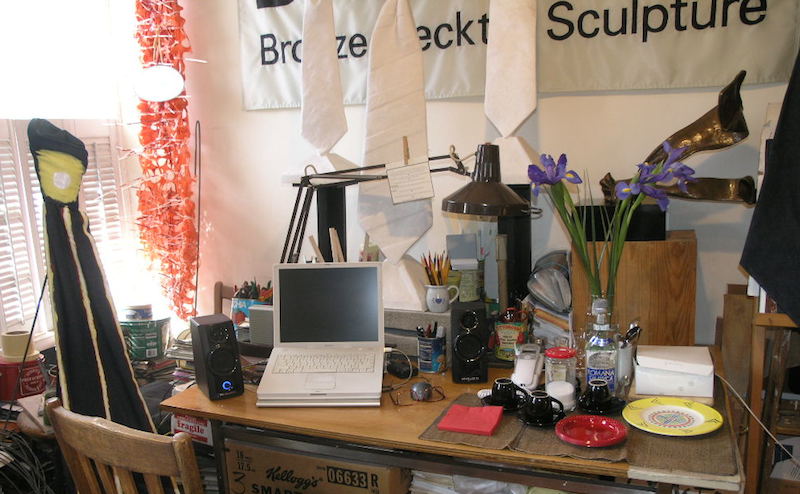

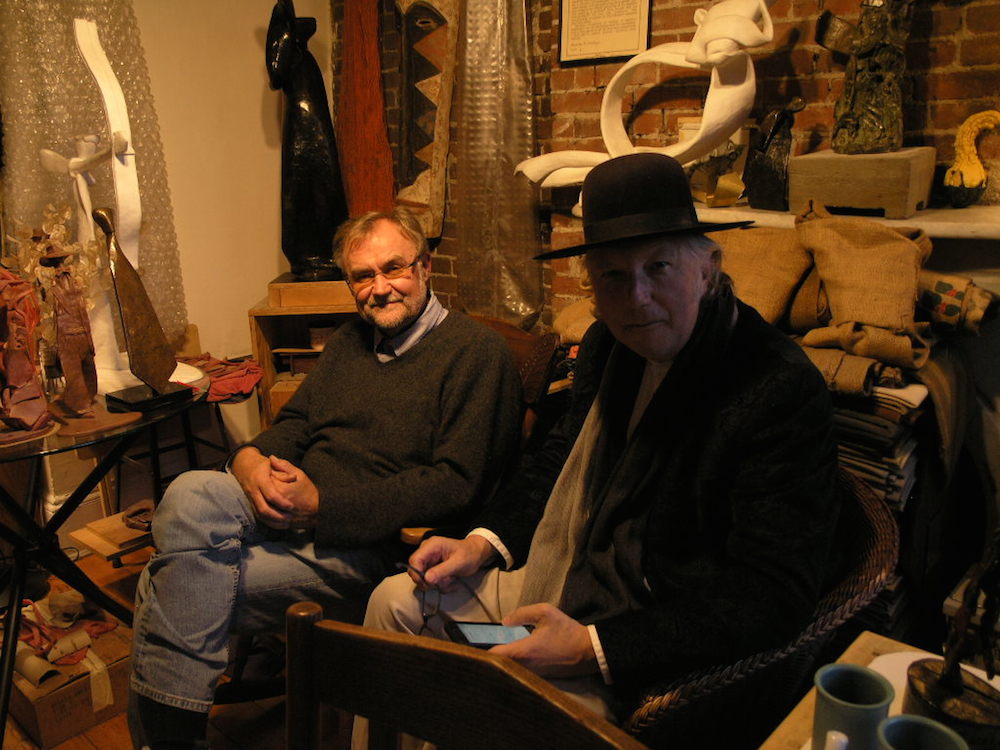


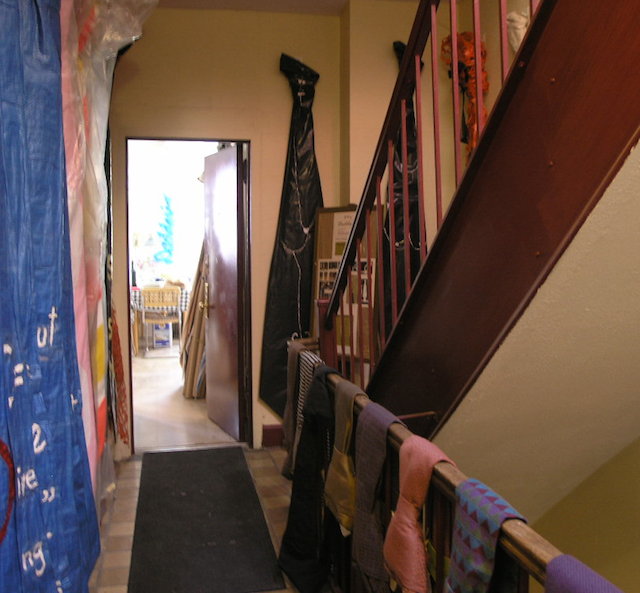







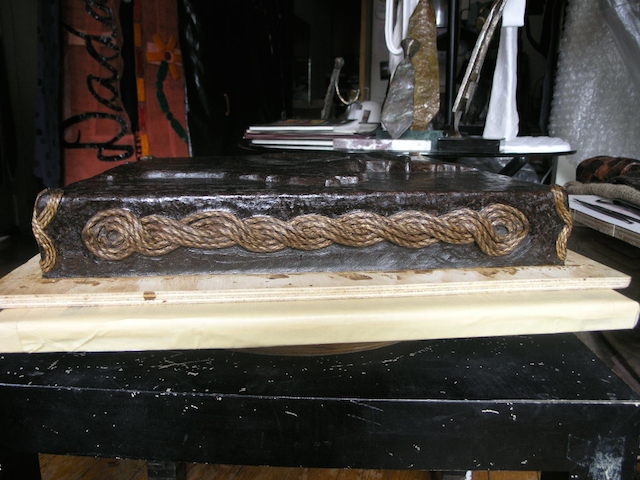

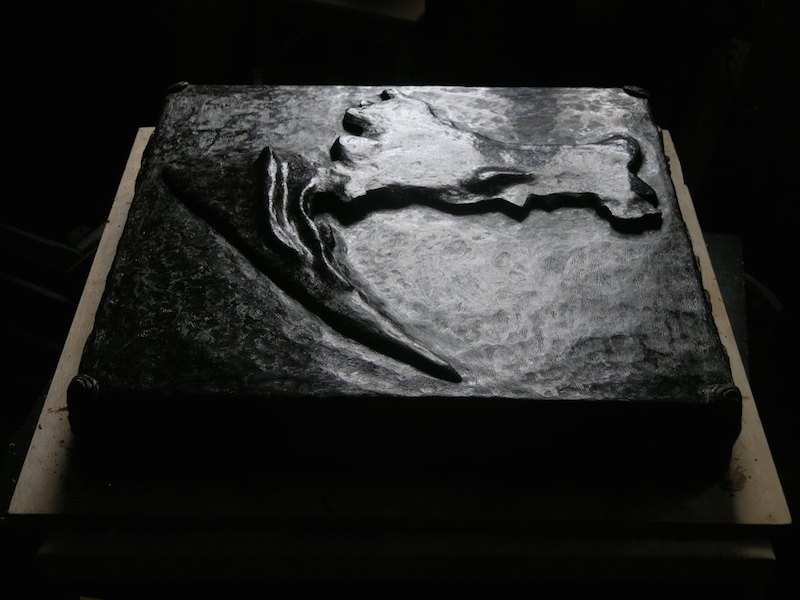
The (wax) Base-raised topography of Croatia, with interlace pattern
design (pleter, in Croatian) on four sides - to be cast in bronze.
Please, go to the next page below.



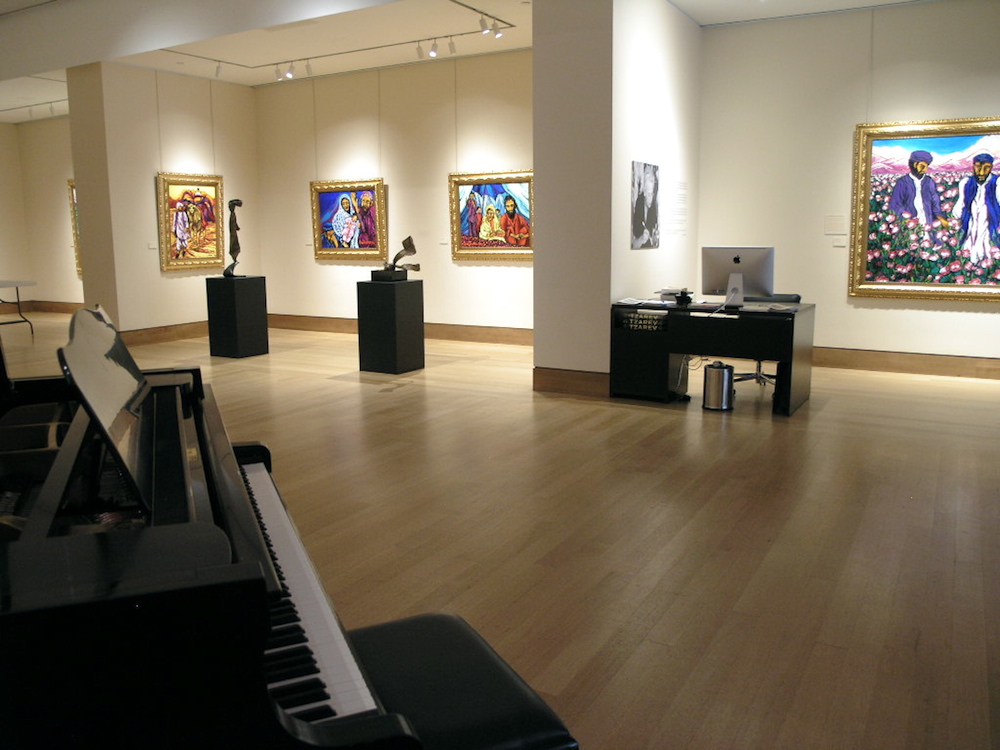



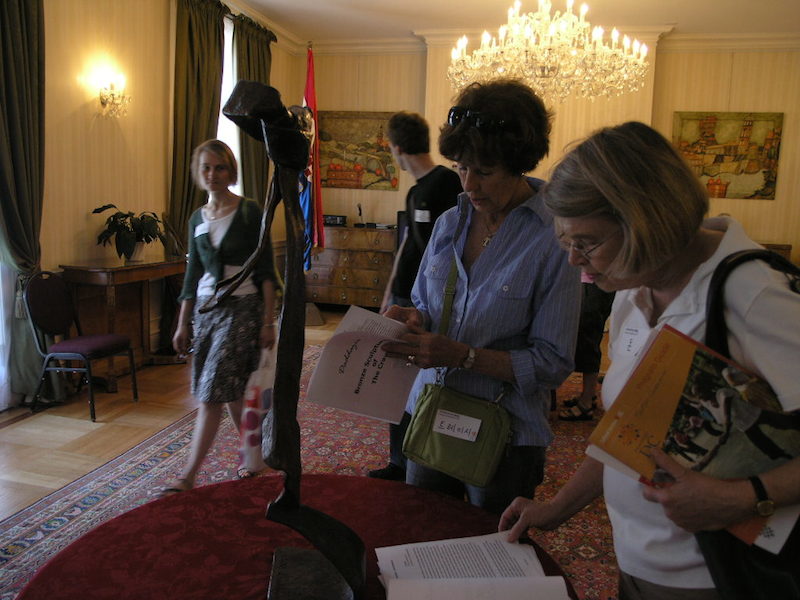
 | Nicholas B. Daddazio studies the necktie as an icon and symbol of Western culture, rather than a fashion statement. He is also the first artist in the four hundred year history of the cravat/necktie to make figurative and representational bronze sculptures of the necktie/cravat. The giant neckties can be displayed on walls, in corners, on doors, along a staircase, hung from the ceiling, or flung over a bed, piano, or couch. As everybody knows, the cravat, as a global fashion element, has Croatian roots from the 16th century, and even the name of the cravat is derived from the name of Croatia. |
Cravat sculptures by Nicholas B. Daddazio, part 1

Nicholas B. Daddazio, the Cravat Man in his atelier in New York.
"Thus, the task is not so much to see what no one yet has seen,
but to think what nobody yet has thought about that which everybody sees."
- Arthur Schopenhauer
Video of 18 October 2015, Studio Daddazio, with Nicholas B. Daddazio, Nenad Bach, Ivo Bach, and Josip.
| About Nicholas B. Daddazio Daddazio's subject and sculptural niche since 1992 has been and continues to be necktie sculpture (Contemporary Urban Primitive Art) in both bronze and mixed-media. He studies the necktie as an icon and symbol of Western culture, rather than a fashion statement. He is also the first artist in the four hundred year history of the cravat/necktie to make figurative and representational bronze sculptures of the necktie/cravat. An article in the Italian Magazine, Nodus, (Milano, 2000) describes him as the "Maestra di Trasformismo" (Di Simona P.K. Daviddi). The figurative bronze necktie sculptures adhere strictly to the lines, structure, and volume of a real necktie, and the trick is to stay within this framework to create a human or animal figure that is doing something that is common to all. For, example: Tie Trumpet; Tie Saxophonist; Tie Geisha; Tie Ballerina; Tie Kiss; Reclining Tie; Tiecoon; Bowtie [archer]. On the other hand, there is the Representational bronze necktie sculpture that imitates a real necktie realized in bronze: Repp Stripe; Repp Buff; Repp Textured; Perch; Freedom; Posara; Spirit (s) I, II, III. There are other necktie sculptures that don't fit into either category, for example, Male Moda (bronze) ; 50th (bronze) ; and, G.W., Jr. (Papi?r Mach?). Turning away from classic bronze, is a new genre that he is creating: Contemporary Pop Urban Primitive Sculpture. Mixed-media pieces are constructed like a real necktie and used as giant wall-hangings. A variety of fabrics and materials are used: cotton drop cloth; denim; burlap coffee bean sacks; bubble wrap; awning canvas; orange plastic fencing; orange and blue plastic mesh; furniture fabric; astro turf; stainless steel mesh; blue poly tarp; plastic compactor bags; and many other materials used in the construction trades. More than two hundred mixed-media pieces have been made since 2005. Source nicholas-b--daddazio.artparks.co.uk |

Nicholas B. Daddazio at Ana Tzarev Gallery, New York
| Biography / CV of Nicholas B. Daddazio Nicholas Daddazio is a graduate of the University of Buffalo and studied sculpture in New York as an apprentice to legendary sculptor Domenico Facci, working in the Facci Studios for nearly a decade. In 1992, Daddazio opened his own studio at Pietrasanta Fine Arts in Soho, where he continued making figurative sculpture and commenced an intensive study of the necktie as symbol and tribal icon. His study of the necktie resulted in the production of a large collection of bronze necktie sculptures: Reclining Tie; Tie Saxophonist; Tie Ballerina; Tie Geisha; Representational Stripe, Buff, Textured; Tie Trumpet; and many others. In 1994, The Neckwear Association of America commissioned Daddazio to design the trade organization's new awards trophy, a commission that ran for nearly ten years until the NAA closed its doors. More commissions followed, along with many one-man shows and exhibits and the establishment of the Necktie Sculpture and Art Gallery in 1996 on Cornelia Street in Greenwich Village. In November 2005, Daddazio started making giant necktie sculptures ranging in length from four feet to nine feet in a variety of mixed media: awning canvas, cotton drop cloth, black plastic garbage bags, denim, bubble wrap, orange plastic fencing, orange and blue netting, blue poly tarp, and exquisite furniture fabrics. The artistic expression covers a range from Pop Art to Minimalism to Abstract Expressionism to Realism, and the Nude. The giant neckties can be displayed on walls, in corners, on doors, along a staircase, hung from the ceiling, or flung over a bed, piano, or couch. Daddazio's sculptures are in the private collections of Ralph Lauren, Tommy Hilfiger, The Versace Estate, Jhane Barnes, Kenneth Cole, the President of Brooks Bros., The Forbes Brothers Private Collection, and many others. Source nicholas-b--daddazio.artparks.co.uk STUDIO DADDAZIO 31 Cornelia Street New York, N.Y. 10014 212.645.6942 nbdaddazio@mac.com http://www.necktiesculpture. Daddazio Interview with Jane Lee-Uncover NY-ABC-TV Studio Daddazio-Greenwich Village, NYC Link: vimeo.com/39588613 |

Nenad Bach decorated with the cravat sculpture by Nicholas B. Dadazzio at Ana Tzarev Gallery, New York

Studio Daddazio, Greenwich Village, NYC
| Artist Statement of Nicholas B. Daddazio Necktie Sculpture as icon and symbol of Western Culture is an unending subject of interest for me to explore. In 1991, my search for a new and surprisingly unusual, offbeat, out of the ordinary, and unexpected subject for my art led me to the ubiquitous necktie. The necktie was bold, beautiful and everywhere, not as sculpture, though, rather as fashion statement and accessory. The whole world could recognize the necktie in an instant, and in reality it was a Tribal Icon of the West. Forbes even promotes the necktie as a Capitalist Tool! The overwhelming meaning and importance of the necktie remained "submerged" in significance for more than one hundred years in the clutter of our culture. Deep within our mindset was the concept of the necktie as a necessary colorful piece of fabric that brings elegance or meaning to your appearance. The psychological protection expanded over time, beneath the surface of every-day consciousness. The necktie was present, religiously, on the body and not in the form of a bronze sculpture or constructed gigantically in different media and exhibited on a wall. To make the transition, to transform, and to displace the ever-present necktie from its very familiar location so that it is out of "context" and re-born into a form of urban primitive art was a challenge worth pursuing. Exploration began in wax, plaster, wire, and clay models. 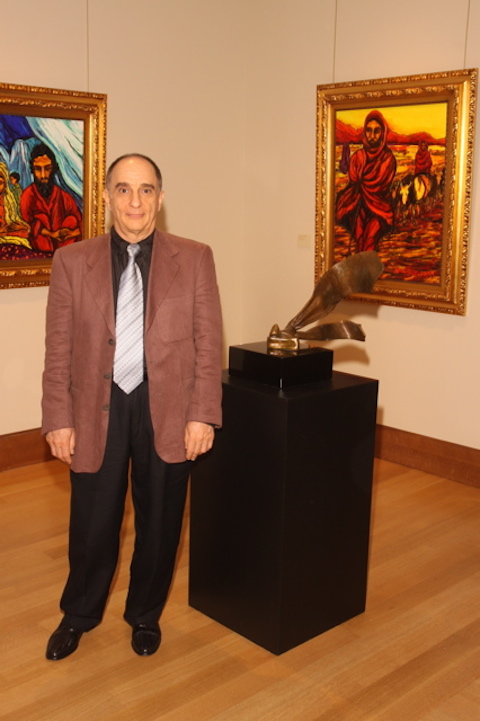 Nicholas B. Daddazio at at Ana Tzarev Gallery, New York Of all the models that were made, three emerged which laid the foundation for Necktie Sculpture: Reclining Tie, Tie Ballerina, and Tie Saxophonist. Molds were made for all three pieces which were subsequently cast into bronze using the Lost Wax Method. Many more bronze necktie sculptures followed in the form of representational and figurative pieces, and they were cast in Limited Editions, Open Editions, or unique (one-of-a-kind) sculptures. As output continued in classic bronze, another form of necktie sculpture emerged in November 2005: Mixed Media Necktie Sculpture. The average height of the pieces was six feet, and they were made in bubble wrap, awning canvas, burlap coffee sacks, black garbage bags, blue poly tarp, canvas drop cloth, orange fence, blue and orange netting, fish net, denim, and furniture fabric. The Mixed Media pieces were "sculpted" with objects, constructed, painted on, and hot-glued together. Both classic Bronze Necktie Sculpture and Mixed Media Necktie Sculpture form the basis of my art and a framework for me to continue my study of the necktie as symbol and icon of the West. Source nicholas-b--daddazio.artparks.co.uk |




Nenad Bach with his friend Josip in atelier of Nicholas B. Daddazio.



Please, go to the next page below.
Cravat sculptures by Nicholas B. Daddazio, part 2










The (wax) Base-raised topography of Croatia, with interlace pattern
design (pleter, in Croatian) on four sides - to be cast in bronze.
Please, go to the next page below.
Cravat sculptures by Nicholas B. Daddazio, part 3

Sculpture for Croatia in two parts: The (wax) Base-raised topography of Croatia, with interlace pattern
design (pleter, in Croatian) on four sides - to be cast in bronze.
design (pleter, in Croatian) on four sides - to be cast in bronze.

Cravat decorated with checkerboard.
This decoration is the principal part of Croatian Coat of Arms.

The reverse side of the cravat.

The Cravat sculptures by Nicholas B. Daddazio exhibited at Ana Tzarev Gallery, New York.

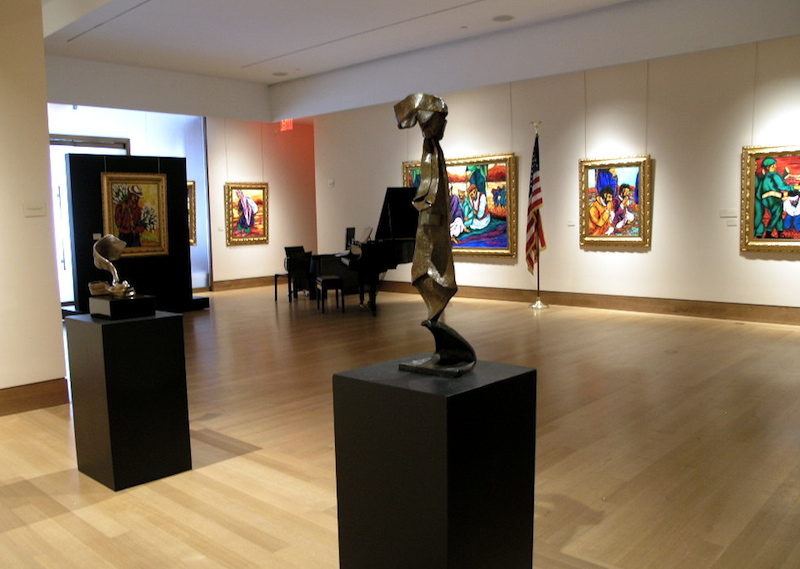

This decoration is the principal part of Croatian Coat of Arms.

The reverse side of the cravat.

The Cravat sculptures by Nicholas B. Daddazio exhibited at Ana Tzarev Gallery, New York.





The Embassy of the Republic of Croatia invited Mr. Nicholas Daddazio to exhibit some of his bronze cravats
at the Embassy Mansion in Washington, DC on 1 May 2010.

Domagoj Juričić, the first secretary of the Embassy, and Mr. Daddazio.
at the Embassy Mansion in Washington, DC on 1 May 2010.
Domagoj Juričić, the first secretary of the Embassy, and Mr. Daddazio.
Mr. Nicholas Daddazio showing a gift from Croatian Embassy - the cravat,
which he obtained from Ms. Jelena Perić, the third secretary of the Embassy.
which he obtained from Ms. Jelena Perić, the third secretary of the Embassy.
This is the last page
Formated for CROWN by Darko Žubrinić
Distributed by www.Croatia.org . This message is intended for Croatian Associations/Institutions and their Friends in Croatia and in the World. The opinions/articles expressed on this list do not reflect personal opinions of the moderator. If the reader of this message is not the intended recipient, please delete or destroy all copies of this communication and please, let us know!
Distributed by www.Croatia.org . This message is intended for Croatian Associations/Institutions and their Friends in Croatia and in the World. The opinions/articles expressed on this list do not reflect personal opinions of the moderator. If the reader of this message is not the intended recipient, please delete or destroy all copies of this communication and please, let us know!